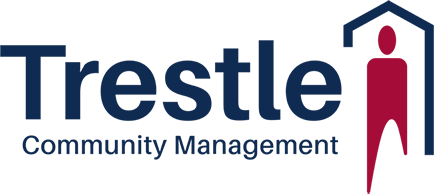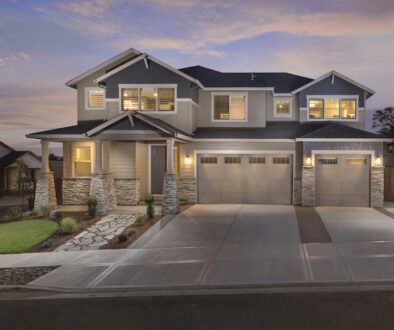Trestle Explains Reserve Studies
A reserve study is a budgeting and planning tool used by Common Interest Community Associations to determine the expected and remaining useful life of common elements. In many Associations, the fiscal year begins January 1st. In order to prepare for the fiscal year, Associations often begin budget planning in late summer and an important part of that process is obtaining an updated reserve study with current funding information.
Understanding Common Elements and Association Expenses
The responsibilities assigned to Associations and Homeowners vary among communities. However, Associations are commonly tasked with administrative responsibilities such as preparing annual budgets, collecting Homeowner assessments, and paying Association expenses.
Beyond administrative responsibilities, there are three areas within a community which have defined maintenance responsibility assigned to Homeowners or the Association:
- Common elements or areas – an item or area accessible to most, if not all, Homeowners within the community. This may include items like roads, play structures, roofs, mailbox kiosks, pools, or clubhouses,
- Limited common elements or areas – an item or area designated to be used by one or more unit or lot but not accessible to all Homeowners. This may include items like plumbing lines or exterior windows and doors, and
- Units or lots – an area designated for the sole use of the Homeowner. The boundaries of the unit or lot are typically defined in the Declaration and vary among communities. Some encompass the entire home, including exterior siding and roofs, while others may end at interior drywall.

While each Homeowner pays assessments to the Association, these assessments are established for common expenses which affect all Homeowners. Common expenses can include items such as utilities, insurance, and landscaping, as well as common element or area maintenance. Limited common elements are typically visible to the exterior or directly linked to a common element. As a result, the Association has a vested interest in maintaining these items in order to preserve community appearance and safety. However, as these elements benefit fewer than all Homeowners within an Association, the expense of their maintenance is often passed along to the affected Homeowners.
The Importance of Reserve Studies
For most Associations, the money saved into a reserve account makes up a large portion of the annual budget. While communities must budget for planned and anticipated expenses for the upcoming fiscal year, they often budget for future expenses as well. Reserve studies outline the projected replacement cost of the elements as well as reserve (savings) recommendations and strategies. As common elements often include high expenditures such as roof replacement, road resurfacing, exterior painting and play structure replacement, Associations typically save toward the expenses over an extended period of time.
Rather than paying for large projects at once, many Associations budget to put funds allocated to these expenses into the reserve account(s) each month over a period of several years. This strategy can help to reduce the individual owner burden at the time of a large-scale project and help a community avoid a costly special assessment.
Reserve Study Preparation
Oftentimes, a reserve study is prepared by an independent group of trained reserve specialists. Per Washington State law, an Association must update its reserve study annually unless it meets specific criteria to waive the requirement. Once drafted, the study is provided to the community’s Board or Committee Members for review. If no changes are requested, the study is finalized to be used by the community for the upcoming fiscal year. To view the most recent reserve study update for your community, please visit Trestle’s My-Community Web Portal.
Reserve Studies and the Budgeting Process
After the reserve study has been received, reviewed, and approved by the Board of Directors or assigned Committee Members, the initial budget preparation begins. Commonly, this starts with a budget planning session in which the Board identifies upcoming planned projects and the community’s needs. After setting goals for the upcoming year, the draft budget is prepared. Most Washington State Community Associations are non-profit corporations and as such, budget to bring in exactly what they plan to spend each year.
Association assessments are directly linked to the budget. If an Association’s expected annual expenses are $100,000, it must bring in $100,000 of income during the year to cover these costs. Typically, an Association’s sole source of income is owner assessments and as such, the amount paid by owners directly mirrors the expected expenses.
Identifying the Association’s financial responsibilities, as outlined in its governing documents and State Law, its planned projects and reserve savings strategies, helps to determine the expected costs for the upcoming fiscal year. Generally, recurring expenses such as utilities and landscaping maintenance are known and easily factored into the budget. In addition, budgeting often includes the review of historical spending trends.
While an Association may wish to keep costs low, if it historically spends $1,500 per month on necessary building maintenance, it should budget at least $1,500 per month for building maintenance in the upcoming fiscal year to ensure sufficient funds are available. Some discretionary spending, such as landscaping improvements, can be postponed in an effort to reduce expenses, but known, recurring expenses cannot. While an Association may wish its building maintenance cost $500 per month, it must consider trends and history. Wishful thinking cannot discount facts and trends.
Budget Ratification Meetings
After Board approval, the budget must be ratified in order to go into effect. Ratification is the formalization of the budget. Under The Washington Uniform Common Interest Ownership Act (WUCIOA), the Association must present the approved budget to Homeowners for vote. Unless a majority of voting power within an Association vote against ratifying the budget at the Budget Ratification Meeting, it is automatically ratified and will go into effect at the start of the fiscal year or other period, as determined by the Board.
Reviewing the Budget and Financials
Interested Homeowners can learn more about their Community Association and review its documents by visiting Trestle’s My-Community Web Portal, contacting the Community’s Association Manager and attending Board and community meetings.
Connecting with Trestle
In addition to Trestle’s website, the firm regularly connects on LinkedIn, Facebook, and Twitter.



